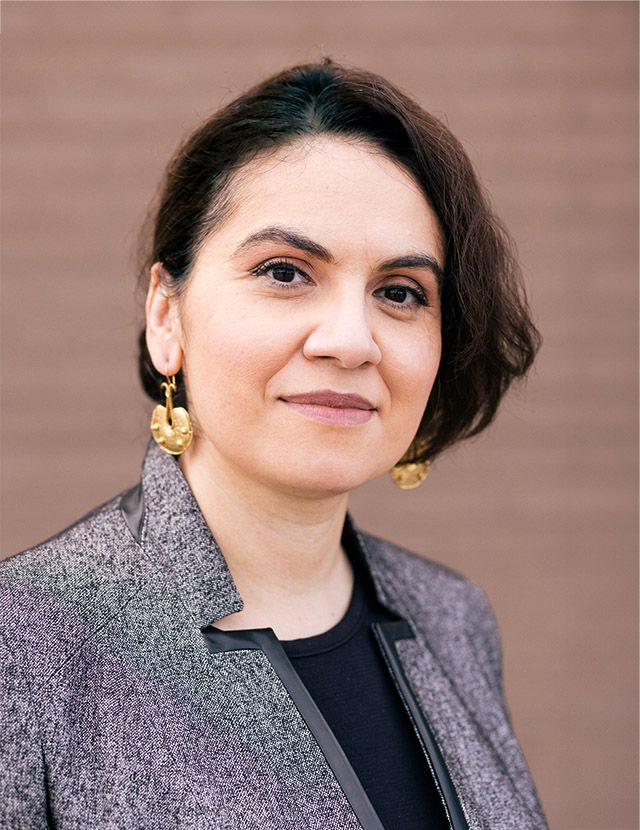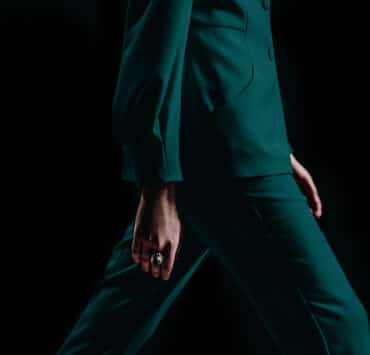|
Getting your Trinity Audio player ready...
|
When Claudette Soto—architect, structural engineer, and president of owner’s representative and construction management firm baso—walks on to projects, she’s often mistaken for someone’s admin. In situations where people know she’s the owner of the company, they assume that she is an acting steward for her husband (she’s not).
Only 10 percent of women make up the construction industry nationwide, and Soto is part of an even smaller pool of women of color in leadership. The entrepreneur has more than fifty clients with projects totaling over $100 million, and she built Chicago’s only Latina-owned representative and construction management firm with the intention of diversifying the industry.
“I formed baso not only to support the Black and Brown community, but also to help retain talent in this industry,” says Soto, who is also the founder of VAMOS, a grassroot organization that introduces science, technology, engineering, arts, and math careers to underserved middle school students. “Because women and minorities are usually pushed out, what I try to do is build them up. My mission is to help them navigate the challenges of being underestimated, criticized, and judged, so they can emerge stronger.”
“My mission is to help women and minorities navigate the challenges of being underestimated, criticized, and judged, so they can emerge stronger.”
Claudette Soto
If it sounds like Soto is taking things personally, that’s because she is. She grew up in Chicago’s Gage Park, a predominantly low-income Latino community. Cracked sidewalks were a common sight. The landscape was “uninspired.” Buildings were old, dilapidated, and damaged without repair for years. Graffiti covered most walls in the area. As a child, she felt like her environment was fixed and beyond repair. As an adult, she labeled the experience as living “in a warzone.” Jumping to the ground when gunshots rang out in front of her house became a regular occurrence.
But far from wanting to escape the neighborhood she came from—the place she credits for giving her the tough skin needed to succeed in an industry dominated by men—Soto decided to invest her energy into changing the environment to better serve its people. The best way she knew how was through meaningful design. It was a childhood passion sparked by tagging alongside her father when he did house renovation work as a side hustle.
Soto, fueled by people who told her she wouldn’t make it through her college program, earned her bachelor’s degree in architecture and then went on to obtain a master’s degree in structural engineering, both from the Illinois Institute of Technology.

Getting credentialed was just one mountain she had to climb. The next would be the prevalence of racism in the architecture industry.
In low-income communities like the one Soto is from, glass structures and modern design are a rarity. The average person might not notice this, but Soto does—and it’s more than a casual observation. She’s worked on projects where decision-makers didn’t believe the cost of materials for more aesthetically pleasing design was worth the investment in neighborhoods where violence and vandalism were common. Graffiti is easier to clean off thick, brick materials. Bullets can pierce brick, but they don’t damage or require replacement the way glass does. As such, windows are typically limited.
Soto believes people at all income levels deserve beautiful things. It’s a belief that formed a decade ago while working on a project meant for the neighborhood she grew up in. The client asked her team to develop a school building with floor-to-ceiling glass exterior so that “the children could look out, and the community could look in.” At the time Soto thought, “does he not realize how dangerous my community is?”
The request was met with additional builds not typically seen in an area like Gage Park. The maintenance staff was given their own office—something Soto credits the respect given to staff as the reason that the building still looks new two years later. Lounge seating was allocated in common areas to encourage collaboration between students; books were placed on shelves nearby that anyone could just grab and go; and floor-to-ceiling windows gave way for impeccable skyline views of the city.
“I expect you to be somebody is what that architecture screamed,” Soto remembers. This experience changed her perspective on the impact design can have on a community and is the seed from which baso grew.
Baso isn’t a design or construction company. What her team of architects, civil engineers, chemical engineers, and former union foreman offers is management of construction projects. If she’s been hired to oversee the construction of an office building, that might look like assisting a client with developing a budget, identifying a location, hiring an architect, and setting a schedule for construction, among other duties.
“These projects offer hope, and they change a community. The work is hard and can be horrible at times, but the rewards are so much greater.”
Claudette Soto
There is no minimum spend to work with baso. Her clients range from mom-and-pop businesses to the City of Chicago. Commercial, residential, and institutional projects all fall under her range of expertise. Several of her staff members also come from and live in communities that are often overlooked by more traditional design and construction firms.
At forty-four, Soto continues to show up for her community, but she is tired. She’s the mother of three sons and, in 2023, she was diagnosed with breast cancer. She fought the disease in private until her physical appearance began to change, and she had no choice but to inform clients. Some canceled contracts, afraid of what might happen if her health took a turn for the worse despite her assurances that her team was more than well-equipped to execute their agreements. She says it was a “big wake-up call, reminding me that I am replaceable.”
However, Soto also says it’s projects like PODER’s new headquarters—which is Chicago’s first dedicated immigrant integration and job center, designed by world-renowned architect Francisco González-Pulido—that keep her going.
“As a child, I would pass by this building time and time again, and wonder what it was,” Soto recalls. “It sat vacant for decades. Now it’s a hub in my community where immigrants learn English and skills that will put them into jobs like finance. Not just cleaning or hard labor. It’s giving them a different future.
“These projects offer hope, and they change a community,” she continues. “The work is hard and can be horrible at times, but the rewards are so much greater.”

